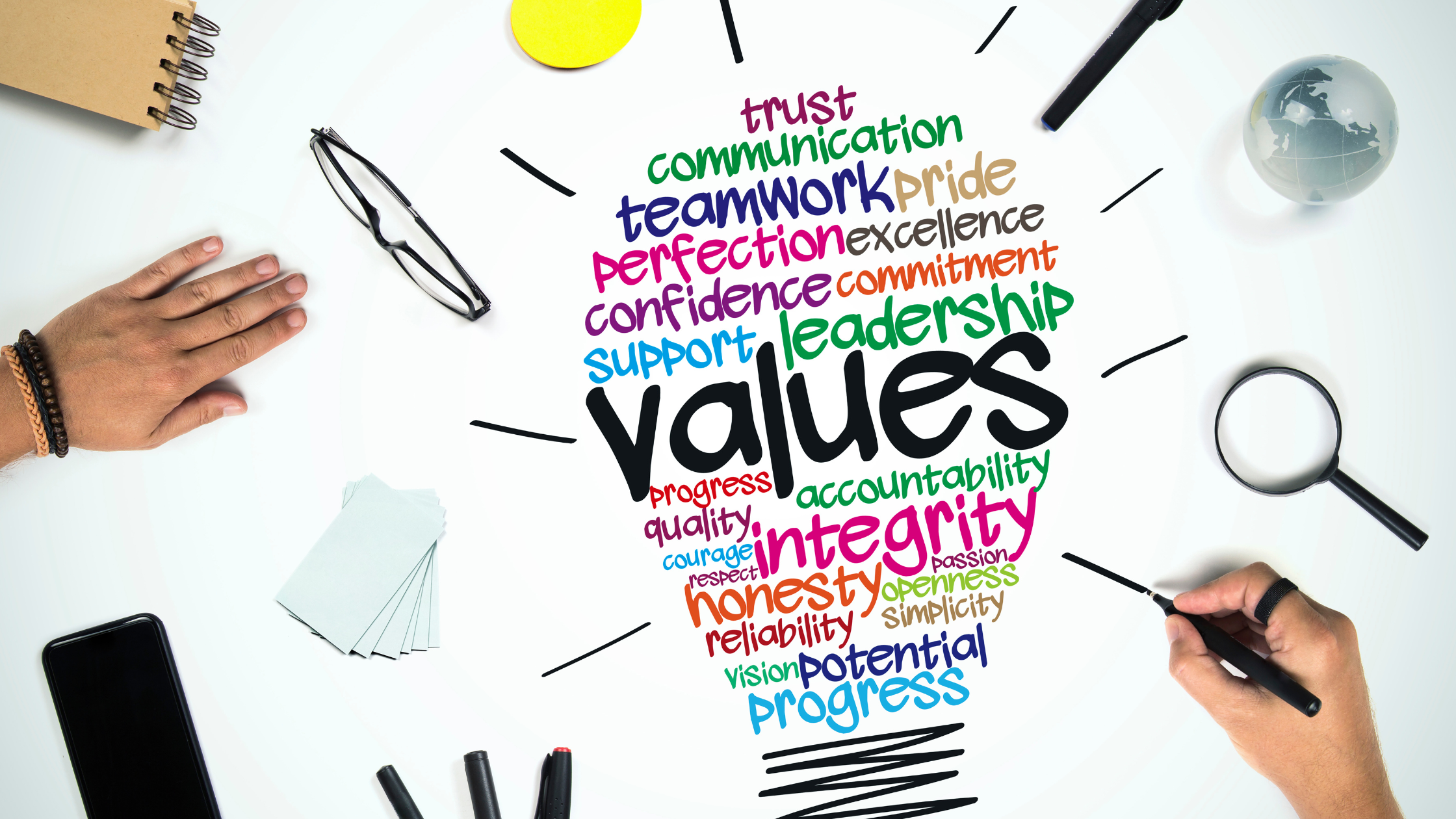The values of your organization are reflected in the way you do business, the cultural norms experienced by employees through the behaviors of leaders, managers, and teammates, and the lowest level of behavior that is accepted within the company. Your company culture is shaped by these factors.
Values can become your DNA when instilled in your key HR processes through the employee life-cycle.
What do your values mean to people beyond the paper they are written on?
- Selection: Assess your candidates against the key behaviors that define your values – structured interviews are key here.
- Onboarding: New hires are the most impressionable and learn the cultural norms quickly. Ensure that the onboarding plan stresses the importance of your values.
- Performance versus Behavior: Performance is the result against goals but HOW people achieve those results should have equal importance. Would you keep a high performer who consistently has the “jerk” factor or a mediocre performer who consistently lives and embodies your values? A performance and a behavior rating can help reinforce the difference between the two.
- Rewards & Recognition: Consistently reward and publicly celebrate those who embody your values.
- Succession Management: Leaders must consistently role model your values and a gate for those who make it to succession plans.
- Offboarding: Those who consistently fail to live your values must be shown the door regardless of how great their performance ratings may be.
Values are defined by how your organization operates, the cultural “norms” as felt by people through behaviors displayed by your leaders, managers, and teammates. Your culture is the lowest level of behavior you tolerate.
Values can become your DNA when instilled in your key HR processes through the employee life-cycle. What do your values mean to people beyond the paper they are written on?
How do people feel about working with your organization?
The way people experience how work gets done, levels of approvals required i.e. “red tape”, how teams and leaders work together, has a significant impact on how people feel.
You could have the best benefits and above-market pay grades, but often it’s the softer things that matter to people. Architecting a great experience starts with these foundations:
- People policies – When crafting policies or practices – keep the language human and friendly. Cater to regional or local cultural nuances and demographics of your employees.
- Fair treatment & inclusion – People must be treated fairly when it comes to pay, a voice in meetings, not feeling left out of key decisions that impact them, objective performance reviews without favoritism by the manager, equal access to project or career opportunities, and finally how the team treats each other.
- Psychological safety and well-being – Do employees feel that the organization is there to support them, or is the relationship simply driven by a paycheck and job security is always a concern? Creating a safe, flexible, risk-friendly environment where people aren’t looking over their shoulders is a winning recipe. Build and hire for empathy as a key soft skill across your leadership ranks.
Your Employer Brand is What People See & Say
Let’s face it, what people say in company surveys or even review sites is different than what they tell their family and friends. Humans are, unfortunately, hard-wired for negativity. We remember negative experiences far better than positive ones – termed “negative bias”. We are also hard-wired to be social.
This combination means that negative experiences are shared more than positive ones. Putting this in the context of the experience organizations create for employees, it is critically important to tease out and showcase positive experiences with at least 5x more effort to overcome the negative bias.
Create a “winning” mindset that lasts through a careful branding and messaging strategy. Some considerations are as follows:
- Client success stories, financial stability/growth, why people join and stay at your organization through real interviews and public celebrations of achievements – e.g. tenure, job well done, promotions, team awards.
- Transparency with work being done to maintain fairness and inclusion – e.g. equitable pay, hiring and promotion practices, bias-free performance reviews.
- How the company is positively impacting society, the environment, and suppliers.
- Board and leadership visibility – showcase leaders as “winning” role models both at work and outside of work.
In order to create a positive and successful work environment, it is important to consider cultural differences and keep the language simple and clear. It is also important to regularly remind employees how their work aligns with the mission of the company. To foster a strong corporate culture, it is helpful to link company values to specific behaviors that are meaningful to employees.
These behaviors should also be incorporated into HR processes and recognized through rewards and recognition. In addition, it is essential to create a supportive and inclusive environment where employees feel empowered to do their best work. This can be achieved through employee-friendly policies and practices, as well as a safe and supportive work culture. To cultivate a “winning” mindset within the organization, leaders should consistently communicate the company’s values and goals, and highlight efforts towards fairness and social impact. To foster a more human connection with leadership, it is also helpful to share stories about their lives outside of work.


